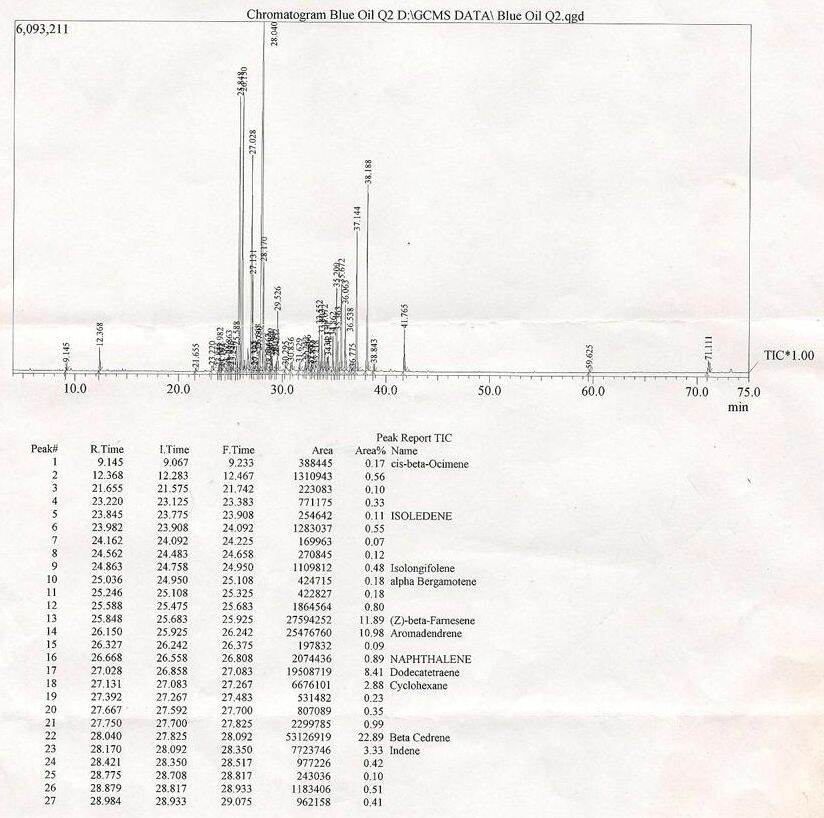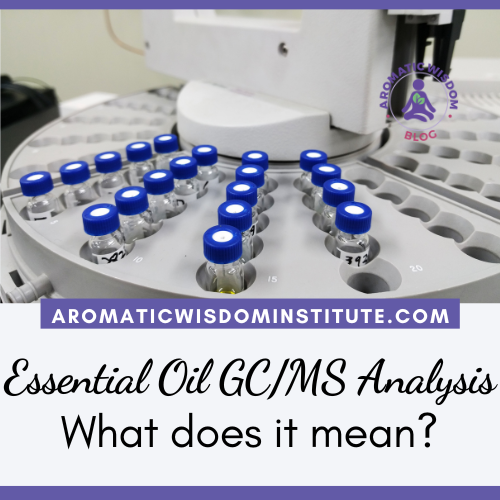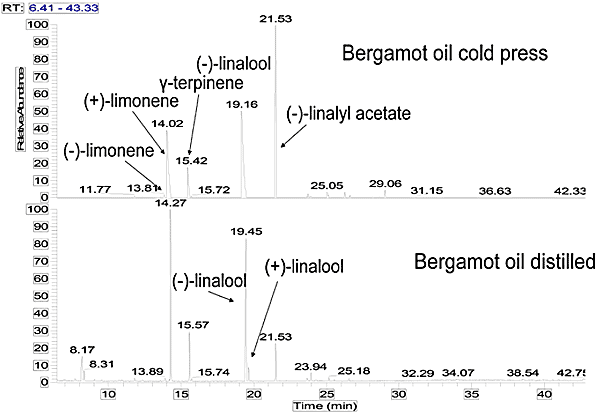PREFER TO LISTEN? Click on the circle below or go to the podcast
Would You Like to Create Safe and Effective
DIY Essential Oil Products?
Then this important blog post is for you!
Do you know the specific chemical components of the essential oils you’re using?
Do these phrases mean anything to you?
- Oxide-rich essential oils are superb for treating respiratory problems.
- Essential oils with a high percentage of Sesquiterpenes are more stable and have a longer shelf-life.
- Oregano essential oil contains between 61-84% carvacrol, and therefore must be used with caution.
- Aldehyde-rich essential oils can be irritating to the skin and should be used in a low dilution.
- Essential Oils with a high percentage of monoterpenes are highly lipophilic and therefore penetrate the tissues of the body easily (penetration enhancers).
No? Then it’s time to raise the bar on your aromatherapy practice!
Advantages of Using GC/MS Tested Essential Oils
If you are serious about your work as an aromatherapist and want to use essential oils for their maximum therapeutic benefit, I strongly suggest you learn the molecules from which they are made. The only way you can know this is through batch-specific GC/MS analysis of the essential oil.
What does GC/MS Testing Mean?
GC/MS stands for Gas Chromatography and Mass Spectrometry. Gas Chromatography (GC) is a method of separating the volatile compounds in essential oils into individual components.
The Gas Chromatograph (GS) pictured below is a computer that produces a linear graph that charts individual components.

The Mass Spectrometer (MS) identifies each of these components and their percentages. This process can also tell us if the essential oil has been adulterated. All the main components and some of the trace components will be listed on these reports.
The precise breakdown of the chemical components in an individual oil is SO important!
Why? Because the therapeutic benefits and safety issues of essential oils are determined by their chemical composition. This process is vital for medicinal blending and quality assurance!
You can expect to pay a tiny bit more for essential oils that have been batch-specific tested, but it is money well spent when you want purity and the best results possible from your blends.
GC/MS Sheets in the Aromatic Wisdom Institute Classroom
 In the classroom at Aromatic Wisdom Institute, my students use only essential oils that are batch-specific GC/MS tested. In fact, our ACP (Aromatherapy Certification Program) is based on blending from the chemical component perspective so my students can create the most effective formulas for the best results.
In the classroom at Aromatic Wisdom Institute, my students use only essential oils that are batch-specific GC/MS tested. In fact, our ACP (Aromatherapy Certification Program) is based on blending from the chemical component perspective so my students can create the most effective formulas for the best results.
GC/MS is Not the Same as MSDS
 Please note that the information you receive on a GS/MS analysis report is NOT the same as that given on an MSDS sheet.
Please note that the information you receive on a GS/MS analysis report is NOT the same as that given on an MSDS sheet.
Many essential oil distributors will offer you their Material Safety Data Sheet (MSDS). This is fine, but it does not give the chemical breakdown of the oil. An MSDS sheet is intended to provide workers and emergency personnel with procedures for handling or working with that substance in a safe manner and includes information such as melting point, toxicity, storage, disposal, protective equipment, and spill-handling procedures.
Your Action Step: Call the person who sells you your essential oils
and inquire if their oils are batch-specific GC/MS tested!
Then leave a comment below and tell me about that call!
Updated on June 28, 2023 for accuracy and relevance.






never had the differences between GC/MS explained before. Thank you. This makes a lot of sense.
You are so welcome Irene! If only one person got that from today’s post, then I’m a happy teacher indeed! Thanks for stopping in!
Thanks for the information. Oils can be so overwhelming. Once you have the gc-ms report how does a lay person go about interpreting this? And how will you know if they have been adulterated ?
Hi Jen, you’re absolutely right. Understanding the chemistry of the essential oils and how to read a GC/MS report (which will help you understand if it has been adulterated) can seem overwhelming, especially for a beginner. Try to forget that it’s chemistry, and look at it as learning a new language. There are 10 main chemical families, learn those names first. Then begin to get familiar with just one family. Start with the Monoterpenes. Learn which oils are in that family and what they all have in common. Beyond that, I do suggest you take a professional certification class where how to read a GC/MS report is part of the program. Not sure where you live, but I teach a live Aromatherapy Certification Program every spring and fall in Pennsylvania. People come from all over – long distances – for the class. Also, I did a podcast on the chemistry of essential oils that you might find helpful. You can listen here: AromaticWisdomInstitute.com/08 OR AromaticWisdomInstitute.com/iTunes. Hope this helps! Liz
Thanks, that is a great place to start. And I will check out your course as well
I’m wondering,
The post date is June 28, 2023,
But the comments is starting on July 2012??
How come?
Great question! I’ve been blogging and podcasting for so long that I will often go back and review my content and repost those that I have updated for accuracy or relevance. Unless I forget, I add this in italics at the bottom of those blog posts.
Have a small lavender farm in eastern Oregon. Would like to test my oils. I distill 10 varieties approximately 30 times in a 100 L copper distiller.
Hi Cliff! My husband, James Fulcher, is the owner of Copperstills.com. He’s the person you would want to speak with and he gets questions on the presence of heavy metals in copper quite often. He has his copper stills tested at a lab, but I can purchase a home lead testing kit from Amazon. If you write to him at info@copperstills.com I’m sure he can help you. Thank you for asking! I wish more distillers understood the importance of testing. Liz
I have been trying to understand aromatherapy chemistry in general. I wish you had a class on chemistry and blending alone.
Hi Vixen, actually our Aromatherapy Certification Program is pretty much comprised of aromachemistry and blending. Students study 10 chemical families then blend based on each family. For example, we study first the Monoterpenes and learn about 19 oils in that family. Then everyone makes blends using Monoterpene-rich oils. By the time we move onto the Sesquiterpenes, everyone is very clear on Monoterpenes. We do this for 10 Chemical Families. I think you’d love it!
Well written.
Can you add something about flame ionization?
James
Hi James, and thanks for stopping to read my blog post. Not sure exactly what you would like me to add exactly…? I have had little exposure to flame ionization and checked in with Robert Seidel, distiller and owner of the Essential Oil Company and learned it is a type of gas detector used in gas chromotography.
For more information Wikipedia has quite a lot of information on it here: https://en.wikipedia.org/wiki/Flame_ionization_detector.
Is there something you can share with ME on the topic James? I am always happy to learn something new!
GC/MS is a great marketing tool for essential oil companies. It does little to determine quality as so many companies say. It does help to standardize and therefore promote adulteration of essential oils. Nature does not care about numbers and charts and therefore essential oils should not match a chart we humans decide is correct for composition. I teach a certificate course at Bastyr University, the premiere natural medicine school outside of Seattle. It is true that the chemistry, what the essential oils are made of, is important and a major focus in therapeutic essential oil use. My chemistry course teaches the understanding of chemical composition, but also how to think beyond the individual compounds to the synergistic value of the oil’s composition. GC/MS is an interesting tool to see what an individual essential oil is offering from a specific vintage. It’s cost prohibitive to small distillers producing amazing oils. So don’t be sold by companies promoting GC/MS as a sales tool.
What labs would you recomend for GCMS testing on Essential Oils?
Any independent laboratory will do the testing for you. Many University Science Departments can do it. Expect to pay about $100 per oil testing.
I wan to compare two companies that carry essential oils, what kind of test has to be done. I don’t mind paying the money just would like to know where and what do I test them for.
I inquired regarding the GC/MS testing and was told that their oils were GC tested but not MS tested. What exactly does that mean?? Sorry, I am rather new to all of this and I just need it broken down in laymens terms:)
I love Doterra-they use the GC/MS as part of their testing methods. But what I really love is that the oils are sourced from where they are indigenous. I know there are a lot of great oils out there, but these are my personal favorites.
Hi Wendy, I didn’t know that DoTerra does GC/MS testing on their oils. Are the reports batch-specific and available to the users? That would be great!
No they are not available to their sales representatives. I was once a rep. and inquired about getting a copy of the GC/MS reports and was told that it was available online and where to find it. It wasn’t there. I spoke to another person on the phone and was told that they were not available for distribution. I am no longer a rep. for that and many other reasons. They talk alot about the GC/MS reports but don’t make them available.
They are now. Every batch and every bottle has a number that you can go and check on.
A few comments…
First, it’s great to see a chemical device explained to non-chemists! Too many people are distrustful of technology, but when explained simply, many things that seem mysterious (and to some untrustworthy) can be appreciated. As a PhD chemist I applaud you!
I don’t want to comment on the worth of doing the GC/MS testing of the essential oils as I do not know enough about their specifics to offer a thoughtful opinion on this. But I can answer a few questions regarding GC/MS in general and correct a few items in the original post. I’ll make a few comments on the information provided in the post above.
“Gas Chromatography (GC) is a method of separating the volatile compounds in essential oils into individual components. The Gas Chromatography (GS) (pictured below) is a computer that produces a linear graph that charts individual components.”
Excellent! This is exactly correct. In order to measure individual chemicals, they need to be separated. The GC contains a long (30 meters typically) narrow (less than 0.5 millimeters diameter) tube that is coiled up (called a column). A very small sample of the oil is injected into one end, heated into a gas, then passed through the column. Chemistry inside the column makes some chemicals take longer than others to pass through. In this way they are separated.
Analytical chemists typically refer to measuring devices as “instruments”, not machines or computers. I’m always reminding future scientists of this!
GC can be used as a stand-alone instrument to measure the quantity of each component in the oil. The flame ionization detector (FID) discussed above burns each chemical component as it exits the column. When burned the component produce ions that generate a small electrical signal. The stronger the signal, the greater the concentration.
Where GC is great for quantity measurement, it does not give an exact identification of each component. Roughly speaking, a certain chemical component will always take the same amount of time to pass through the column. For example, from above, terpinene will always take about 15.42 minutes to pass through the column (under the same conditions) – so if you see a peak there, it is probably terpinene.
Where the mass spectrometer (MS) shines is in qualitative analysis, offering a very strong chance of exactly confirming the identity of individual components. The MS replaces the FID (mentioned above) when the GC is mated to the MS. The MS can have many different modes of operation but in general here is what happens. As the individual component of the oil exit the GC column, they are sucked into the MS one at a time. Once in the MS, they are turned into ions (electrons are removed) and these ions are measured according to their mass (weight). In this way, for example, water (H2O) can be distinguished from methane (CH4) as the former has an atomic mass of 18 and the latter is 16. This is great, but even more powerful is the ability for GCMS to identify seemingly identical compounds as actually being different. For example from the essential oil above, the two versions of limonene and the terpinene have identical chemical formulas, C10H16, and thus identical masses (136). However, the carbon and oxygen atoms are arranged differently in each. In the MS, the different chemicals will fall apart differently, essentially giving a fingerprint that positively identifies one from the other.
Sorry for the long post… maybe you can tell I love this stuff!
I noticed that a new EO company has a seal on their bottles that says CG,MS certified with a checkmark and the word “passed.” Is this legitimate?
Hello can I get my cedar leaf oil and cedar Leaf Hydrosol tested for there chemistry?
And much of a sample you need ?
You can get any essential oil tested from certain chemists, but it won’t be cheap. Expect to pay about $100 per sample. You don’t need much Red, only about 1 ml.
Hi! Can you recommend some chemists or labs that will do GC/MS testing of some essential oils for me?
Hi Patrick, Most private laboratories that offer GC/MS testing will do essential oil testing for you. Expect to pay about $100 per essential oil. You can also try contacting the chemistry department of local universities to see if they will do it for you. Liz
Hi there!
Great topic and that is what really needed in modern time in essential oils world – independent auditor GC/MS report for most popular essential oils brand.
Thanks for this info.
Liz, could you please maybe recommend independent audit web sites, who produce GC/MS reports for popular essential oils brand?
Thanks 😊
Thank you and good for you that you understand and appreciate the value of this kind of information in today’s world of essential oils! Can you explain what you mean by “audit websites please?”